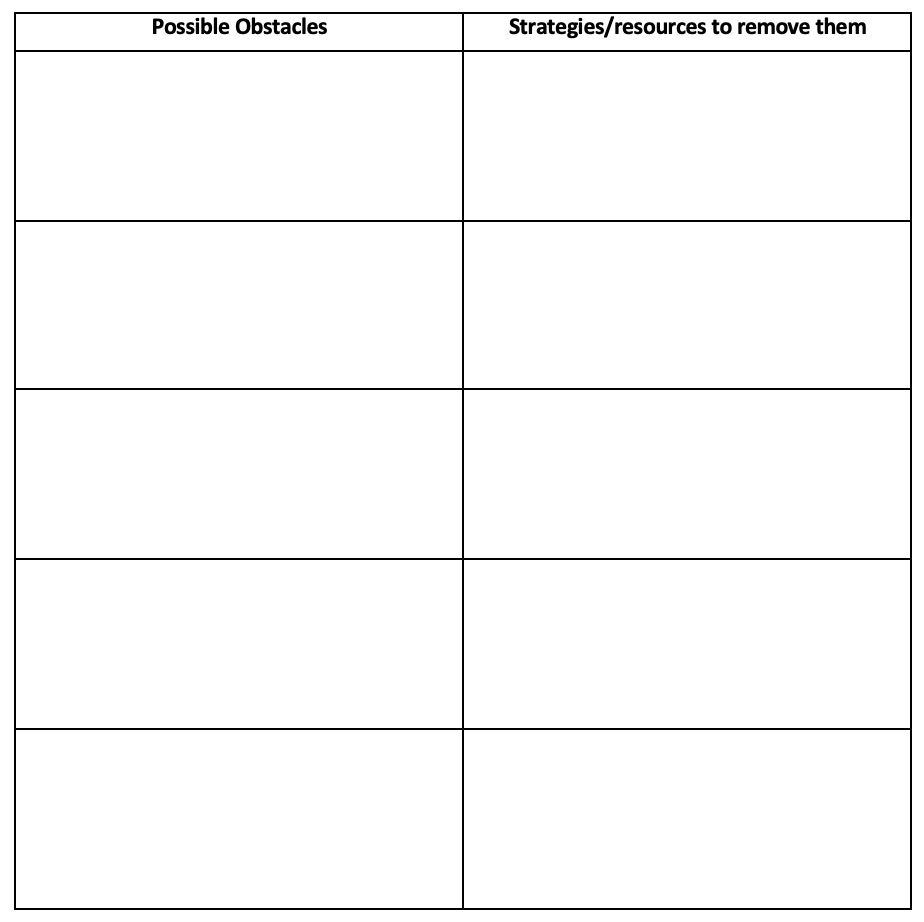Planning for obstacles
Every year thousands of students start college with the hopes and dreams of completing a degree that will change their lives. And every year thousands of students leave college campuses without achieving that dream. Too many.
The factors that influence college attrition and failure rates are multiple: financial difficulties, physical and mental health problems, lack of family support, skills deficiency, low confidence, no sense of belonging, and many others. Some of these factors are out of the student’s control. Others are not. Here, I will discuss one factor that few people address, I see very often in my practice, and that with the proper mindset can be corrected. I’m referring to the fact that very few people plan for obstacles.
Optimism is a key ingredient in our recipe for success. Nobody plans for failure (not intentionally). You don’t start a project thinking that everything will go wrong. Otherwise, most likely you won’t start it. For every goal or plan we set, there’s an inherent hope for a successful outcome. But the problem lies between that thin line between being optimistic and being unrealistic. When you make a plan only considering the best-case scenario you engage in what Daniel Kahneman and Amos Tversky call the planning fallacy.
According to Kahneman, the planning fallacy is a manifestation of a pervasive optimistic bias. In other words, we think about some goals as more achievable than they really are. And because of that optimistic bias, we underestimate the time, effort or risks involved in completing a task or goal. We can foresee challenges, but rarely plan for the obstacles that could prevent us from achieving the goal.
Adversity can strike at any time or place and college is not the exception. Let me share a few examples of some common and uncommon challenges I’ve seen through my career:
- A first-year student missed her first week of classes because she didn’t have transportation. She bought a car for college but her insurance paperwork was not ready on time. During her second week of classes she had a car accident and lost her car. She never returned to class.
- A young man went back home during Spring break and found out his girlfriend was cheating with his best friend. He later returned to campus suffering from depression and with suicidal thoughts.
- An adult learner and two-times cancer survivor had been working very hard for several semesters to build confidence and achieve good grades to enter a health-science program. After a bad performance on an exam, her confidence was destroyed by an instructor with just one single comment: “you don’t belong in college”.
- A student starts hanging out with the “wrong” crowd and soon starts skipping classes and making other poor life decisions. Before he realizes, he’s addicted to alcohol and narcotics, fails most courses for two straight semesters and is dismissed from college.
While some of these examples might look extreme and depict situations out of the student’s control, transportation issues, financial struggles, physical or mental health challenges, poor academic performance, rude and hostile situations, and unhealthy relationships happen more often than you think (unfortunately). But some of these barriers are fully foreseeable and preventable. And others can be managed when you learn to plan for obstacles.
It’s critically important to be confident and optimistic. But it’s equally important to be ready for the unexpected as well. Here are some ideas to help you plan effectively:
- Set goals that are realistic and meaningful to you
- Create goals that are measurable (set specific performance standards)
- Connect your short-term goals with your long-term goals
- Identify resources on your campus, community, and personal environment
- Be resilient (persevere on your long-term goals)
- Build strong and healthy relationships
- Ask for help early on (don’t wait for a small rain to become a storm)
And here’s a basic template you could use to plan for obstacles:

Planning ahead is the only way to be ready for almost anything. When filling out a template like this one, you don’t need to think about all the possible tragedies life could throw at you. Just think about realistic situations you could face based on your specific circumstances. For example:
- If your car breaks, what’s your back-up plan to get to campus?
- If you miss class, do you have your professors’ contact information?
- If somebody steals your laptop or tablet, where can you go to complete school work?
- If you feel isolated or depressed, where can you go for counseling?
- If you get sick during the semester, which friends or relatives can you call for help?
- If you face food insecurity, where’s the closest food bank?
We truly wish all our readers the most successful college experience. We also hope you’ll be ready if your plans don’t go as perfectly as we expect.



